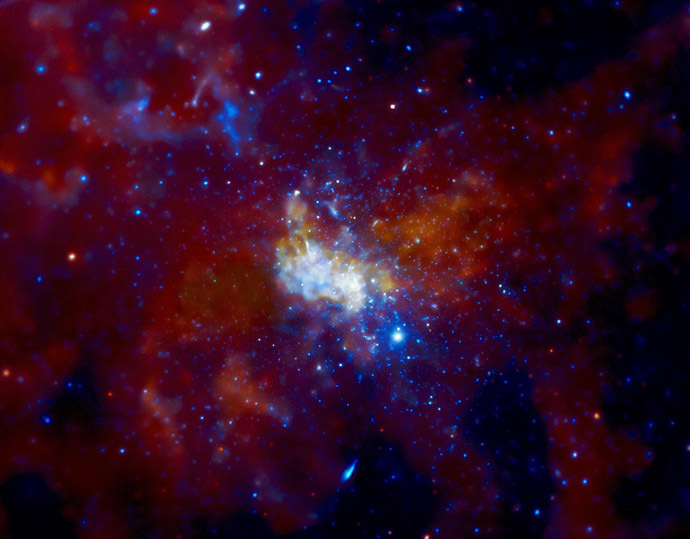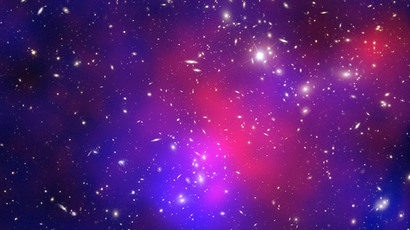Milky Way snack time: Supermassive black hole to consume gas cloud

As gas cloud G2 speeds towards Sagittarius A*, a supermassive black hole at our galaxy’s center, astronomers are getting ready to have some of their questions answered. At least the devouring, expected in March-April, promises to be a spectacular view.
As Sagittarius A* is located almost 26,000 light years away from the Earth, the collision itself took place… well, 26,000 years ago. Now, for the first time in history, astronomers will be able to monitor the feeding of a black hole
According to scientific models of the Max Planck Institute for Extraterrestrial Physics in Germany, G2’s elliptical orbit will pass the event horizon, the point-of-no-return from the black hole’s grasp, around March 31. The closest distance from the black hole’s core will be about 130 AU (astronomical unit, roughly Earth’s distance from the Sun).
"Everyone wants to see the event happening because it's so rare,"said Nathalie Degenaar, who is a Hubble researcher in the Department of Astronomy at the College of Literature, Science, and the Arts at the University of Michigan.
The gaseous object, G2, discovered in 2011 by the European Science Organization, is about three times the mass of Earth. Travelling on a highly eccentric orbit, it is quickly approaching the galaxy's central black hole, and as it comes nearer it heats up and its speed increases, turning it into something akin to a giant piece of string.
However, scientists are in doubt whether it is all gas or contains an old star.
In case it is a gas cloud, the invisible space monster will slowly swallow it up for years, creating an impressive show available in the X-ray band. But, if G2 actually hides an old star, its gravitational force would prevent the whole cloud from slipping into the black hole.
"I would be delighted if Sagittarius A* suddenly became 10,000 times brighter. However, it is possible that it will not react much – like a horse that won't drink when led to water," said Jon Miller, a University of Michigan associate professor of astronomy who also works on the project. "If Sagittarius A* consumes some of G2, we can learn about black holes accreting at low levels – sneaking midnight snacks. It is potentially a unique window into how most black holes in the present-day universe accrete."

The Milky Way's 4 million-solar mass supermassive black hole, Sagittarius A* can be found in the southern summer sky near the constellations of Sagittarius and Scorpius. It is actually quite dim, and the highly anticipated ‘meal’, already transformed into ‘spaghetti’ by the black hole’s enormous gravity, may lighten it up a bit.
"We think that the fainter ones are the majority, but it's very difficult to study those," Degenaar said on supermassive black holes that are believed to compose the centers of all elliptical and spiral galaxies. "We just can't see them. Ours is the only one we can study to understand what their role is in the universe."
The strangeness, in addition to enigmatic properties of space and time in proximity to black holes, has secured them considerable interest not only of scientists, but also of science fiction writers. The history of black holes dates back to the 18th century, when they were first imagined as “black stars” that absorb light. But later on, black holes came to be defined as “compact” objects (that is, having enough mass in a small enough volume) with gravity so extreme that nothing can escape it – even light, regarded as the fastest thing in the universe.
"They eat matter from their surroundings and blow matter back. The way they do that influences the evolution of the entire galaxy – how stars are formed, how the galaxy grows, how it interacts with other galaxies," Degenaar said. "Even more broadly, the way galaxies evolved is important for the evolution of the whole universe, how it came into being and how it's changing."













